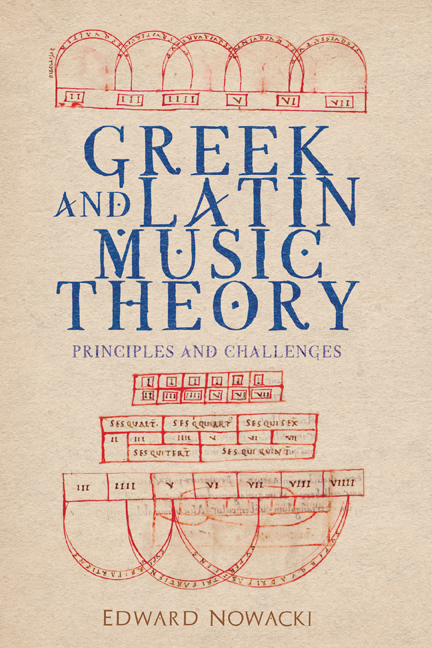11 - The Misunderstood Confinalis
Published online by Cambridge University Press: 14 August 2020
Summary
To careful readers of the medieval theoretical tradition, the term confinalis denotes something quite different from the meaning usually attributed to it in modern theoretical discourse. The change seems to have occurred in the fifteenth century, when theorists began to define the confinalis as the fifth step of the modal octave—that is, the upper extremity of the mode's characteristic species of fifth—and an alternative to the final as a note suitable for concluding whole compositions. In this sense it is a term of melodic syntax, identifying a note by its function and position in the melodic stream. In its earlier meaning, the one in use from the ninth to the fifteenth century, the confinalis referred to a note in the gamut five steps above the finalis to which entire compositions could be transposed. In that earlier sense, its meaning was not syntactical but precompositional, since it referred, in the first instance, to the underlying pitch collection rather than to the way in which the pitches were used. When chants were transposed to the confinalis, that note assumed the syntactical identity of finality, functioning not as a fifth step, but as the first step of a transposed segment of melody. The very notion that a chant seated in its normal position, not transposed, could conclude on its fifth step was, for the most part, alien to medieval thought and practice. How a note marking the site of transposition later came to be thought of as possessing the melodic function of alternative finality in an untransposed setting is a long story whose episodes have yet to be fully told. That story is the subject of this essay.
The first difficulty is terminological. Though assumed to be a common term of medieval theory, the word confinalis was not even coined until the thirteenth century. The first use appears to be in the Practica artis musice of Amerus, possibly written at Viterbo in 1271. In the ninth, tenth, eleventh, and twelfth centuries, the concept to which confinalis refers was known variously as affinalis, compar, consimilis, consocialis, and most commonly, affinis and socialis. The concept arose in discussions of modal affinity, the doctrine that defines the modes on D, E, F, and G as being repeatable on a, ♮, c, and d, respectively.
- Type
- Chapter
- Information
- Greek and Latin Music TheoryPrinciples and Challenges, pp. 92 - 110Publisher: Boydell & BrewerPrint publication year: 2020



